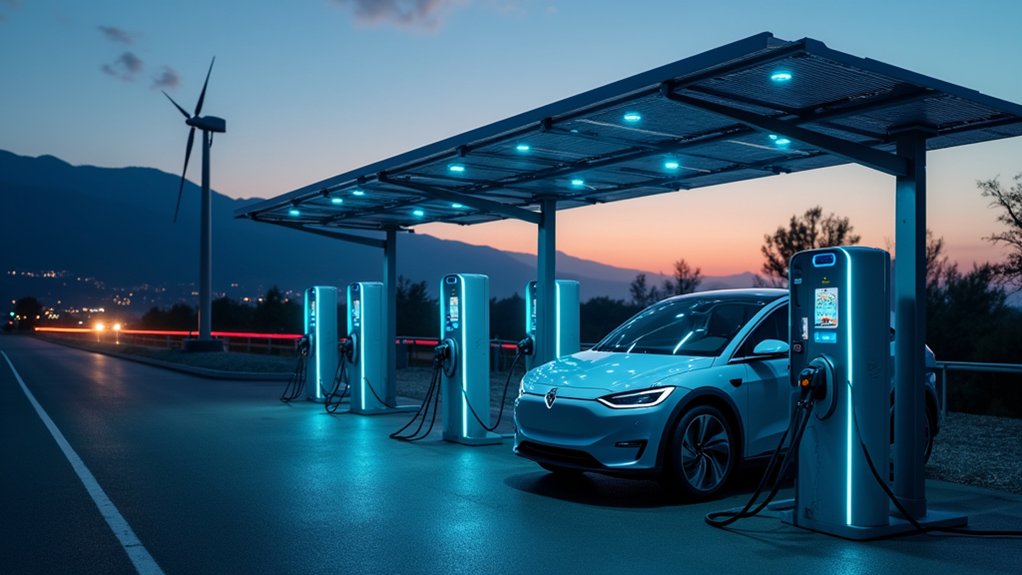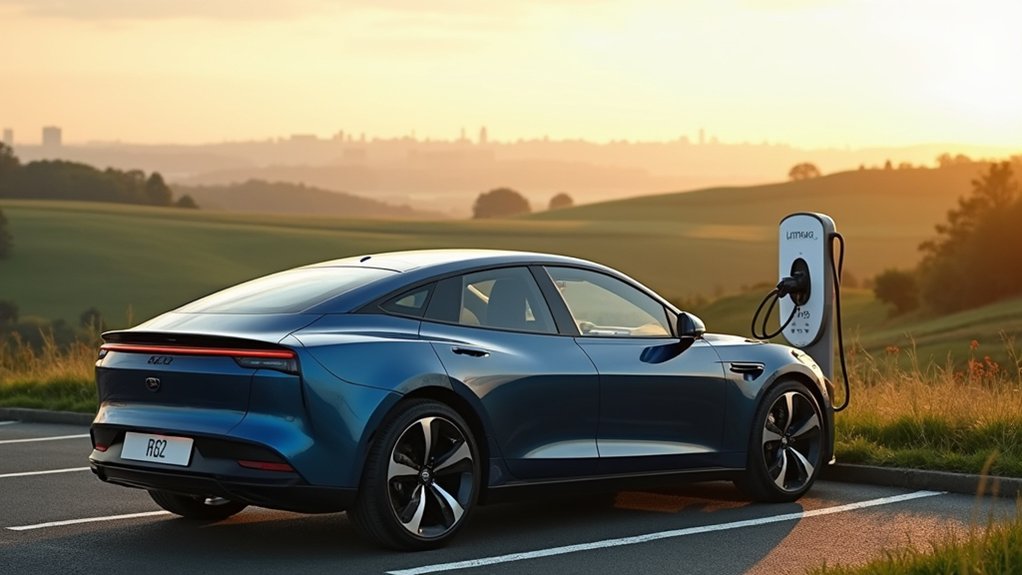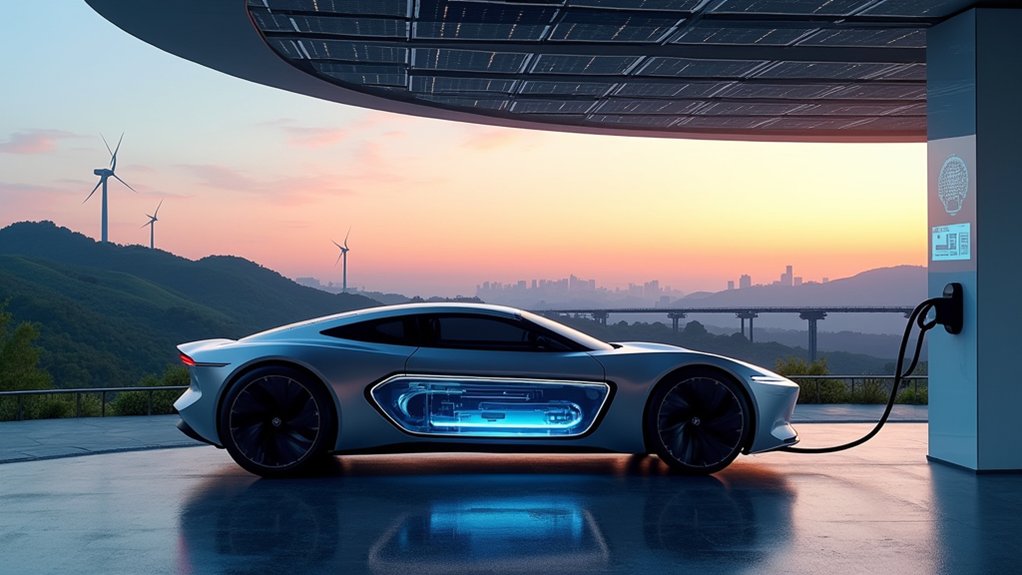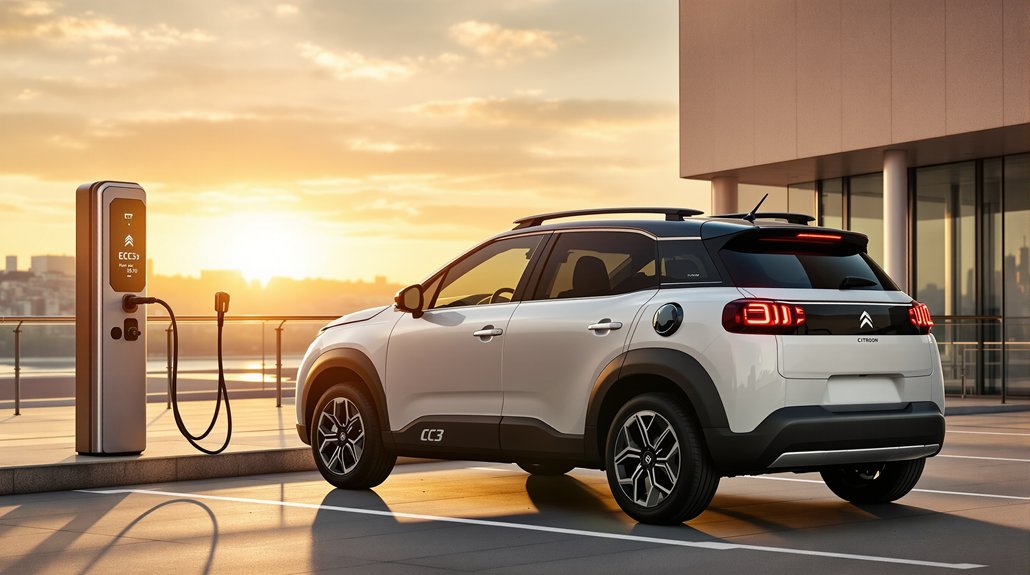The future of EV charging networks promises exponential growth, with global revenues projected to reach $1,084 billion by 2029. Smart charging technology and bidirectional capabilities are revolutionizing the ecosystem, while government initiatives accelerate infrastructure deployment. ChargePoint currently dominates with 42.8% of U.S. public charging ports, but emerging technologies like wireless charging and ultra-fast 350kW stations are reshaping the landscape. The evolution of standardization and cross-border compatibility will determine how this critical infrastructure unfolds.

The evolution of electric vehicle charging networks represents one of the most significant transformations in modern transportation infrastructure. With ChargePoint leading the U.S. market at 42.8% of public charging ports across 15,454 sites, the industry continues to expand rapidly through both private and government initiatives. The charging landscape now encompasses everything from basic AC chargers for overnight use to cutting-edge ultra-fast charging stations operating at 350 kW. The global market shows promising expansion with revenue projections reaching US$1,084.0 billion by 2029.
The technological advancement of charging systems has been remarkable, particularly in the domain of smart charging and bidirectional capabilities. Modern stations can now dynamically manage electricity loads while offering vehicle-to-grid functionality, fundamentally altering our relationship with energy distribution. These stations utilize wireless M2M cards to maintain constant communication with central backend systems.
Smart charging technology revolutionizes energy distribution, empowering stations to balance loads and enable two-way power flow between vehicles and grid.
The emergence of wireless charging and battery swapping technologies further demonstrates the industry’s commitment to innovation, though widespread adoption remains limited.
Despite significant progress, several challenges persist in the charging network ecosystem. Rural areas continue to suffer from limited infrastructure, while the lack of standardization across charging networks creates unnecessary complexity for EV owners. The high costs associated with installing DC fast-charging stations have slowed deployment in many regions, creating a chicken-and-egg scenario with EV adoption rates. The integration of renewable energy sources into charging stations is becoming increasingly crucial for reducing overall environmental impact.
Government intervention has proven vital in addressing these challenges. Through targeted subsidies and public-private partnerships, authorities are actively promoting infrastructure growth in underserved areas. Urban planning regulations increasingly mandate charging facilities in new developments, while carbon reduction goals drive the integration of renewable energy sources into charging networks.
The global landscape of EV charging networks shows distinct regional characteristics. Europe leads in charging density and cross-border compatibility through platforms like Hubject and Gireve, while the U.S. focuses on expanding its DC fast-charging network.
Emerging markets, particularly in Asia, are experiencing rapid growth driven by government incentives and smart city initiatives. The industry’s future appears increasingly oriented toward ultra-fast charging technology and improved interoperability, though the path to universal standardization remains complex.
Frequently Asked Questions
Can I Charge My EV at Home Using a Regular Wall Outlet?
Standard 110-volt household outlets can charge EVs using the included Level 1 charging cable, providing 4-5 miles of range per hour.
While this works for overnight charging, delivering 36-40 miles of range in 8 hours, it’s only suitable for light daily driving.
Most EV owners eventually upgrade to Level 2 charging (240-volt) for faster charging speeds and enhanced convenience, particularly for longer commutes.
What Happens if My Electric Vehicle Runs Out of Power Mid-Journey?
When an EV runs out of power, the vehicle gradually decelerates until stopping completely.
Warning systems activate several miles before depletion, while power steering and brakes remain functional but stiffer.
The driver should safely maneuver to the roadside, engaging hazard lights.
Recovery typically requires roadside assistance for towing to the nearest charging station, as portable charging solutions aren’t yet widely available for most EVs.
How Long Will My EV Battery Last Before Needing Replacement?
Modern EV batteries typically last 15-20 years or 200,000-280,000 miles before requiring replacement, far exceeding federal warranty requirements of 8 years/100,000 miles.
With average annual degradation of 1.8-2.3%, most batteries retain 70-80% capacity over their lifespan.
Proper maintenance, including ideal charging practices and temperature management, can extend battery life considerably.
Real-world data shows some EVs achieving 400,000+ miles on original batteries.
Are There Standardized Charging Connectors Across All Electric Vehicle Brands?
Currently, EV charging connectors vary by region and manufacturer.
North America primarily uses SAE J1772 (AC), CCS1, and NACS (DC), while Europe employs Type 2 and CCS2 standards.
China utilizes GB/T, and Japan relies on CHAdeMO for DC charging.
However, the industry is moving toward standardization, with NACS gaining widespread adoption in North America and CCS2 becoming dominant in Europe, simplifying future charging infrastructure.
Do Extreme Weather Conditions Affect EV Charging Speed and Efficiency?
Extreme weather considerably impacts EV charging performance.
Cold temperatures can double charging times by slowing battery chemical reactions, while extreme heat increases battery stress and reduces charging stability.
During winter, charging rates at public stations drop markedly, especially in sub-zero conditions.
Battery pre-conditioning systems help mitigate these effects by warming or cooling cells to ideal temperatures before charging sessions begin.










4 comments